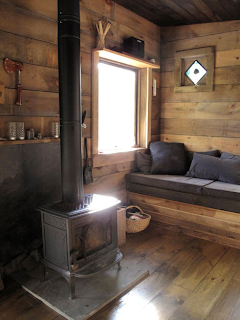The task of synthesizing, or summarizing, my blog entries has been placed upon my shoulders. I know it is not what a professor of Compelling Nature of Mankind wants to hear, but how do you say lack of interest in 750 words? As I said in our face-to-face meeting, “I am not compelled by much.” I am one of the most simplistic people you will ever meet. I like small houses, small cars, small wardrobes and small communities. Do not take this wrong, I appreciate big and fancy things, but they do not impress me; they show off mankind’s gluttony. During this course we have discussed the ways mankind uses photography, video, buildings, music and clothing to sway opinion, or lead somebody into believing something is better that it really is.
When photography was invented, the subjects had to sit real still, or else the image would be distorted. As time went by, photography has become so childproof, even my Kindergartner students know how to take pictures on a cell phone. Images can be manipulated through software programs, compositions cropped to optimum aesthetics and lighting tweaked to just the right shading. In my blog, I discussed how I like to use time and light to create an image. By waiting for just the right conditions, my photographic compositions seem to take greater life than standard pictures. I am able to share this information to my students in the form of digital photography lessons, but the technology is not readily available for me to pursue this regularly.
For the video lesson I had fun making a parody of the Chrysler 200, Super Bowl commercial. I went down to Detroit and filmed my own images, trying to copy some of the icons used in the original. It has been fun listening to the mixed comments I have received over that video, both good and bad. I have used video in my classroom once, by having middle school students film a 15 second commercial. They had to write the script, find appropriate locations (on campus) and perform many takes/retakes. It was hard, but they loved it and produced some real funny commercials.
Architecture is prevalent everywhere we go and teaching in an urban district gives the perfect opportunity for me to teach perspective (one and two point) with the buildings we see every day. I used the architecture unit from class as an idea to base a lesson on where my students drew an imaginary building and made the outside appealing to their desires. If they were drawing a shoe store, the building needed to make me feel invited in and want to shop there. We discussed how buildings are designed for specific purpose, unlike older buildings where necessity prevailed. We also talked about color and “curbside appeal” help draw customers in to a store. The students liked the idea, but the projects were not the greatest. This would be more of a high school level assignment.
I enjoyed the music assignment. I have always listened to a wide variety of songs, but never seen them the way Copeland described. I have always taken them for face value. It was also interesting to hear Kapilow describe how musicians use music to manipulate/hook a listener into staying with the song. I try to introduce music into my classroom, whether through youtube, or cd’s, but my students take this as a challenge to get louder that the song and I have to shut it off. I would love to play music in my classroom, but the right setting is just not there yet.
I have to be one of the worst dressed teachers in any given building. I wear old slacks with old polo shirts when I HAVE to, but get away with blue jeans and a fire tee shirt when I can. Being an Art teacher has its privileges in the fact that I can choose to use a messy medium and the principal will turn a blind eye to my attire. I do try to teach some of my younger students a bit about fashion though. I have a lesson where I provide template of a male and female human. The students then draw and color two “nice” pieces and two “regular/every day” sets for each gender. I like to use my computer and bring up an online clothing catalog for the suit examples. The children are pretty good with the jeans and shirts drawings without the help.
It is very hard for me to get excited about anything that involves manmade goods, but these are some of the ways I have been trying to implement the knowledge we have been gaining from this class into my Art room. If you really think about it, somebody had to pay for everything you see, feel and hear. Not everything is as sweet as it is portrayed and beauty is only skin deep. I know how mankind uses illusionary tactics to divide you from your money; I just disagree with it.









